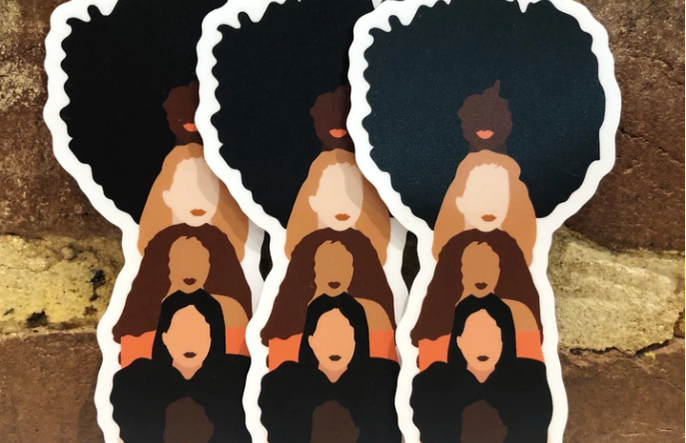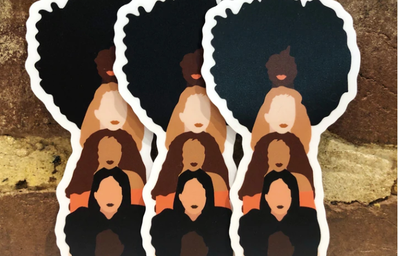For me, the highlight of 2023 was the recognition of the pioneering work of Mary Ann Shadd Cary, the first woman in North America to publish a newspaper during Canada’s pre-Confederation era — a time when freedom of speech was not a right for Black women but a luxury practiced by a select few.
On September 25, 2023, the Canadian Commission for the United Nations Educational, Scientific, and Cultural Organization (UNESCO) announced the inscription of the Mary Ann Shadd Cary records in the Canadian Memory of the World Register. The register lists important pieces of archival documents and documentary heritage to commemorate important pieces constituting Canada’s collective history.
Shadd Cary’s archives are one of the 29 records listed in the Canadian Memory of the World Register. The archives were jointly submitted by Archives Ontario and Library & Archives Canada — where Shadd Cary’s archives will remain. The Canadian Advisory Committee for Memory of the World Register can request to monitor the status of Shadd Cary’s collections on a cyclical basis to ensure universal access to the documents.
Mary Ann Shadd Cary was a Black female educator, author, journalist, lawyer, and abolitionist in the pre-Confederation era, who was born free on October 9, 1823, in Wilmington, Delaware. Following the passage of the Fugitive Slave Act in the United States in 1850, an act that required slaves to be returned to their owners even if they were born free, Shadd Cary was forced to move to Canada West, now known as Ontario – a location that quickly became the spot for the organizing of anti-slavery activism.
From promoting the abolition of slavery to publicizing the successes of Black refugees living in freedom in Canada, the records of Shadd Cary’s work for The Provincial Freeman — a weekly newspaper she founded in 1853 — provide the perspective of a Black female in 19th century Canada West. The Mary Ann Shadd Cary archives also include correspondence with several prominent African American abolitionists like William Still, the father of the Underground Railroad.
Natasha Henry-Dixon, Assistant Professor of African Canadian History at York University said Shadd Cary’s work in The Provincial Freeman is a glimpse of what the Black community was like at the time. “Shadd Cary’s work encompasses the pursuit of freedom and the abolition of slavery in the United States at an individual level, but it is also very much significant and reflective of the Black community at the time,” said Henry-Dixon.
Henry-Dixon said she believes most people don’t know enough about Shadd Cary as a Canadian historical figure. Although the inscription of her record in the Canadian Memory of the World Register is an important step, “there are also emblematic ways that Black history is not considered part of the Canadian narrative,” Henry-Dixon said.
As a long-term academic, Henry Nixon goes on to ask how academics and archivists can work towards the public acknowledgement and understanding that Shadd Cary was a Black female figure from the 19th century who contributed to Canadian history. “You have these documents inscribed into this program that’s supposed to be representative of Canadian memory, so how do we elevate that awareness so that [Shadd Cary] is actually part of that memory?” said Henry-Dixon.
Cody Groat is the Chair of the Canadian Advisory Committee for Memory of the World. As part of the committee’s initiative to include Black experience into Canada’s heritage register, Groat said the committee released a special call for archival submissions that touched on the Black experience in Canada.
Groat said the records represent an attempt on behalf of the Canadian Memory of the World committee to recognize the lack of representation of the Black Canadian community. “Historically, archival institutions were perpetuating sort of racist beliefs about what is worth keeping,” said Groat, “and those were often the collections of white settlers, or white men and women in power.”
Groat added the importance of commemorating Shadd Cary through the Memory of the World Program is to bring public awareness to her work. Students, researchers, and the general public can visit Library & Archives Canada, in Ottawa, or Archives Ontario, in Toronto, for full in-person access to the documents.
“These records really build national conversations and dialogues about how they can provide lessons that are still important today,” said Groat, “[Shadd Cary] wrote a number of immigration guides to the Black community members in the United States, telling them how to immigrate to Canada West, which is now the province of Ontario, and outlining what it’s like for Black community members, and I think that’s a really interesting perspective to see.”
Groat said Shadd Cary’s letters were realistic and balanced when talking about the Black experience at the time. “She said, ‘we might not have slavery in Canada West at this time, but we still have extensive discrimination. But also these are communities where there’s more of a Black focus in the community, and that’s where we might be more welcomed,’” explained Groat.
The archival record of Shadd Cary is a significant collection about both her personal and work life, noted Henry-Dixon. Through her work as an abolitionist, the archives captured Shadd Cary’s passion for the abolitionist movement, a pivotal time in history.
Shadd Cary was able to push back against all of the “-isms, if you will,” said Henry Dixon. “She faced a lot of racism and sexism, based on the patriarchal and gender norms at the time. She was able to navigate that. I think that’s worth highlighting.”



